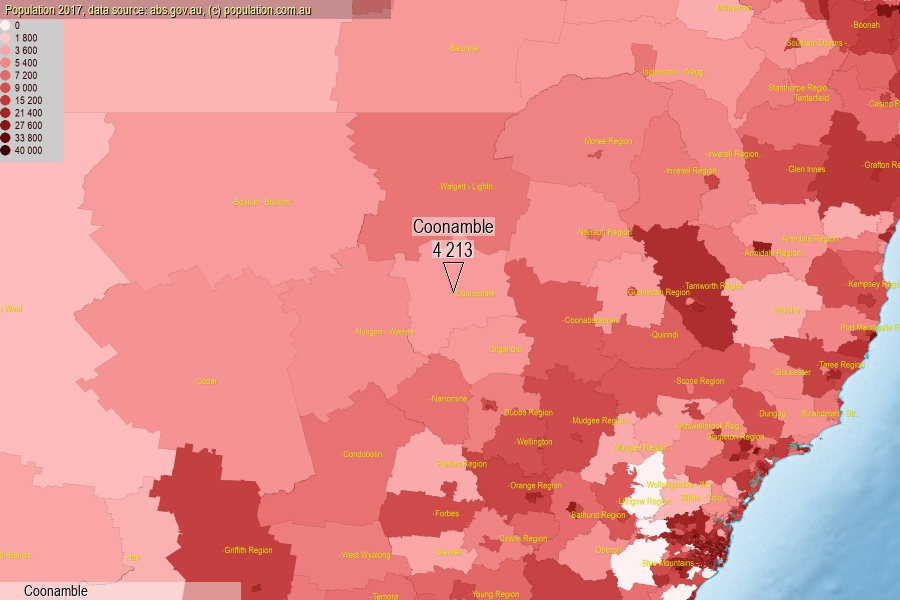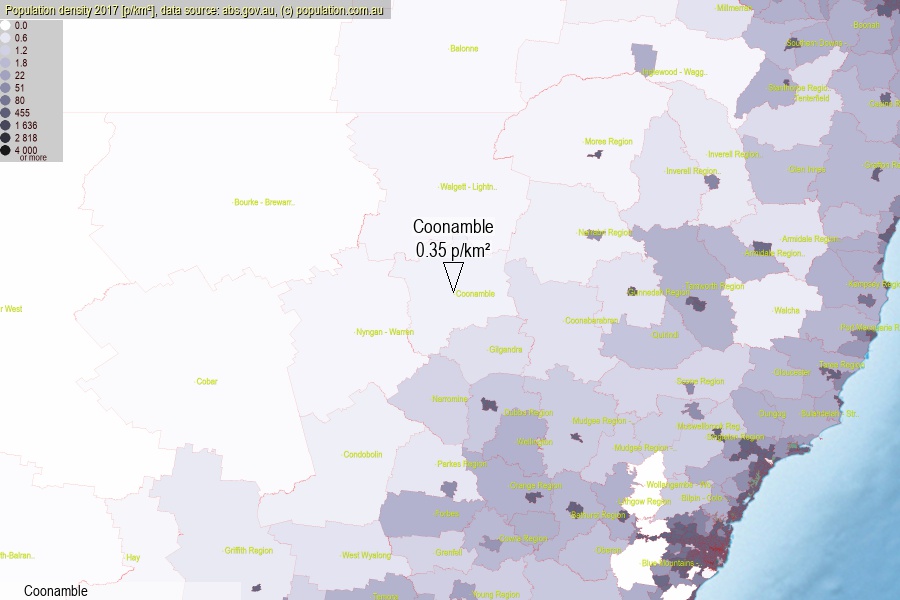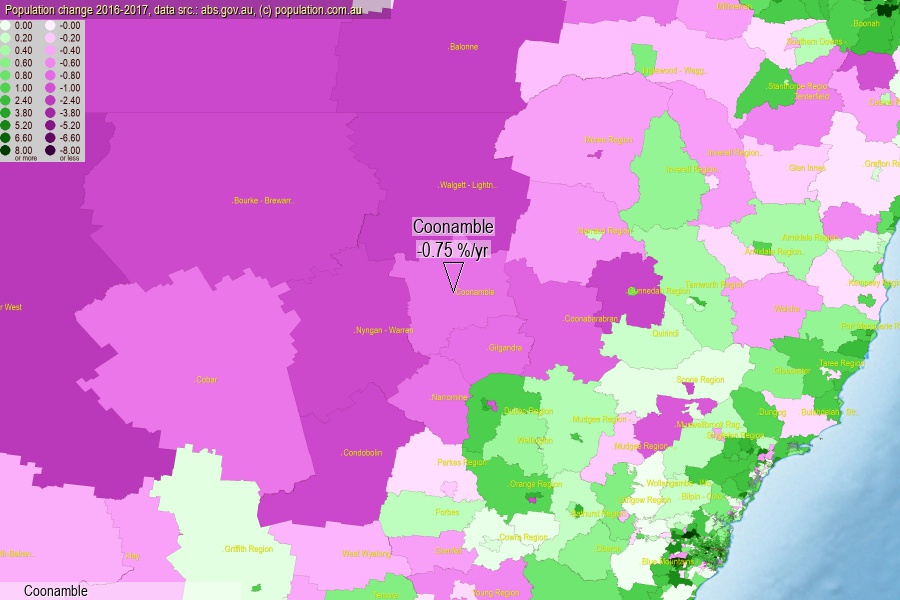 population.com.au
population.com.auLast official estimated population of Coonamble (as Statistical Area Level 2) was 4 213 people (on 2017-06-30)[2]. This was 0.02% of total Australian population and 0.053% of NSW population. Area of Coonamble is 12 142.40 km², in this year population density was 0.35 p/km² . If population growth rate would be same as in period 2016-2017 (-0.75%/yr), Coonamble population in 2025 would be 3 966. [0]



Click to enlarge. Coonamble is located in the center of the images.
Population [people], population density [p./km²] and population change [%/year] [2]
View borders » (new window) [4]
[1991-1992] -0.98 %/Yr.
[1992-1993] -1.66 %/Yr.
[1993-1994] -1.47 %/Yr.
[1994-1995] -2.08 %/Yr.
[1995-1996] -1.92 %/Yr.
[1996-1997] -0.61 %/Yr.
[1997-1998] -1.01 %/Yr.
[1998-1999] -0.44 %/Yr.
[1999-2000] -0.83 %/Yr.
[2000-2001] -0.64 %/Yr.
[2001-2002] -2.44 %/Yr.
[2002-2003] -2.48 %/Yr.
[2003-2004] -2.44 %/Yr.
[2004-2005] -2.10 %/Yr.
[2005-2006] -2.29 %/Yr.
[2006-2007] -0.95 %/Yr.
[2007-2008] -0.29 %/Yr.
[2008-2009] -0.18 %/Yr.
[2009-2010] +0.54 %/Yr.
[2010-2011] -0.34 %/Yr.
[2011-2012] -0.54 %/Yr.
[2012-2013] -0.97 %/Yr.
[2013-2014] -1.00 %/Yr.
[2014-2015] -1.22 %/Yr.
[2015-2016] -1.21 %/Yr.
[2016-2017] -0.75 %/Yr.
[0] Calculated with linear interpolation from officially estimated population
[1] Read more about SA2 and Australian Statistical Geography Standard (ASGS) on abs.gov.au
[2] Population data from Australian Bureau of Statistics (Population and density: 2017; change: 2016-2017)
[3] Digital Boundaries: Australian Statistical Geography Standard (ASGS) 2016.
[4] Border coordinates are simplifyed using Ramer-Douglas-Peucker algorithm.